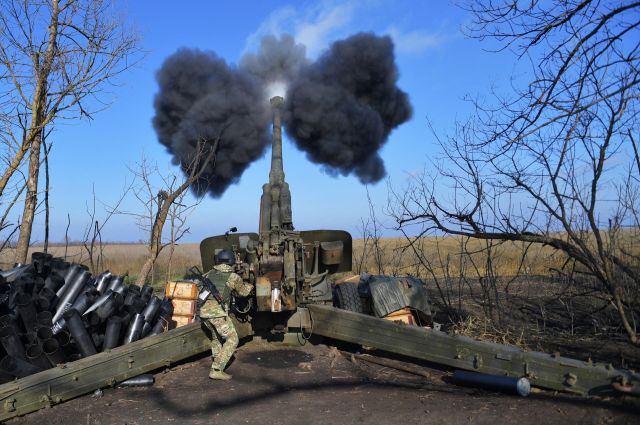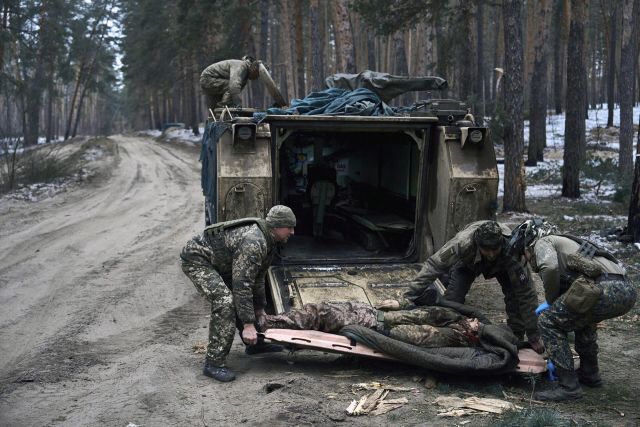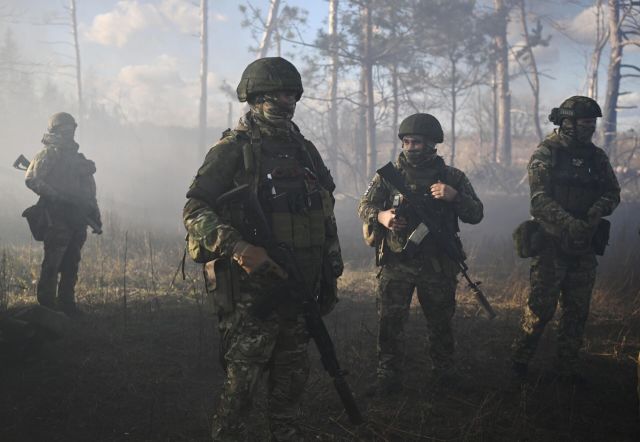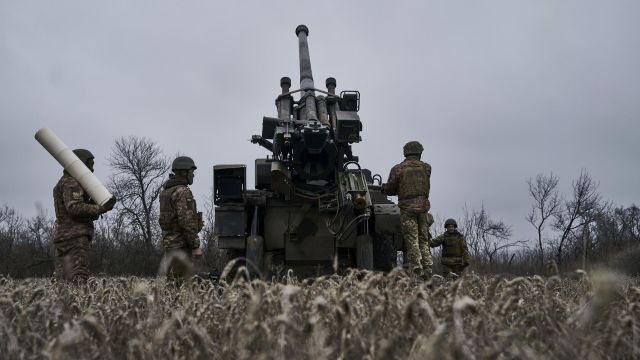WSJ: Russia releases ten thousand shells per day, and Kiev — only two thousand
MOSCOW, January 15 — RIA Novosti, Andrey Kotz. There is a relative lull on the fronts of the special military operation. The fights are mostly positional. After the failed offensive, the Armed Forces of Ukraine went on the defensive and hastily strengthened their positions. What the Russian army is doing in response is in the RIA Novosti article.
Refuseniks in the Wings
The thermometer dropped below ten degrees below zero, which made adjustments to the fighting. The roads are covered with snow, it is more difficult to bring ammunition and transfer reinforcements. The effectiveness of drones has decreased significantly — the batteries run out quickly in the cold. The forest plantations that dropped the "green" can no longer serve as a shelter for equipment and soldiers. And both warring parties are in no hurry to take decisive steps.

An artilleryman of the Russian Armed Forces is firing from a 152 mm Msta-B howitzer
Image source: © RIA Novosti / Pavel Lisitsyn
In the Kherson direction, the fighting is on the same lines. The Russian army continues to iron the Ukrainian bridgehead in Krynki with everything it can. The AFU units entrenched there are destroyed both on the shore and on the water — during the crossing.
Ukrainians do not remain in debt: they actively use FPV drones, whose range is increased due to repeaters, snarling artillery from the higher right bank of the Dnieper. It is unclear how long they will be able to hold this foothold — the mood of the fighters fighting here is not rosy.

The Ukrainian military evacuates the wounded
Image source: © AP Photo / LIBKOS
"After visiting Krynki, many refuse to go there again," Strana told the publication on condition of anonymity.ua" officer of the Armed Forces of Ukraine. — There are refuseniks in every company, they work with them. There are also very tough ones — sometimes it comes to suicide. The soldiers don't understand why they have to hold this bridgehead. Its expediency is a mystery. By the way, there are also many refuseniks among the officers. But, unlike soldiers, this is not particularly noticeable — they find many reasons not to move to the line of contact."
Recall that Vladimir Putin, summing up the results of 2023, said that the APU got into a "fire bag" in Krynki and suffered heavy losses every day. According to him, Kiev is sending its soldiers to be destroyed. "I will say it bluntly: it is beneficial for us that they continue to mindlessly send personnel there. Unfortunately, this is the logic of armed struggle," the Supreme Commander—in-Chief noted.
Bypass the Coal Tank
To the east, in the Zaporozhye direction, fighting continues on the Verbovoye—Rabotino line. In the summer, the Armed Forces of Ukraine struck the main blow of their counteroffensive here. They managed to advance a little and occupy the razed-to-the-ground Workino, but they failed to reach Tokmak and develop success towards Berdyansk and Melitopol. Now the Russian army is gradually displacing Ukrainians from their strongholds. Artillery duels are conducted around the clock.
The front line does not change in the South Donets direction, where Kiev lost two brigades in almost full strength over the summer. The Ukrainian Armed Forces cut off the so-called Vremevsky ledge on the border with the DPR and occupied several villages, including Staromayorskoye and Urozhnoye. But Staromlinovka, through which an important highway passes to the east, was not captured.
They tried to advance to the east, but they also failed to break through the Russian defenses in the Novomayorskoye — Novodonetskoye—Kermenchik triangle.

The Russian military in the area of the special operation
Image source: © RIA Novosti / Alexey Maishev
The hottest direction today is Donetsk, where the Russian Armed Forces have achieved the greatest success. At the end of last year, the western suburb of the capital of the DPR, Maryinka, was finally liberated, the battles for which had been waged from the very beginning of the SVO. It was from here that the artillery of the Kiev regime shelled the western outskirts of Donetsk. For a long time and methodically, Russian stormtroopers "gnawed off" the enemy house by house, street by street.
Now it is possible to develop an offensive to the west through Georgievka in the direction of Kurakhovo and to the south through Pobeda to Novomikhailovka. This will make it possible to cover the Coal mine from the north and northeast, to take under fire control the routes along which the Armed Forces of Ukraine, entrenched in the city, is supplied.
Shell starvation
There is some progress in the Artemivsk section of the Donetsk direction. Having occupied the settlement of Khromovo at the end of November, the advanced units break through to the west of Artemovsk. They took part of Bogdanovka and made significant progress towards Chasov Yar. This locality is quite important.
Firstly, Ukrainian artillery units have been deployed in its vicinity, keeping part of the nearest highways under fire control. Secondly, from here it is possible to advance towards Konstantinovka and Kramatorsk, where the headquarters of the entire AFU grouping in Donbass is located.
South of Artemovsk, the Russian army continues to storm the heights northwest of Kleshcheyevka. To the north, in the Luhansk direction, he is trying to advance near Sinkovka in order to reach Kupyansk from the northeast.
In the Serebryansk forestry, the assault units pushed through the defense of the Armed Forces of Ukraine and delved into their battle formations. They are trying unsuccessfully to counterattack. They are fighting for the so-called Torsky ledge, overhanging the Red Estuary from the east.

"Grads" of the Guards motorized Rifle regiment of the Central Military District are firing at the positions of the Armed Forces of Ukraine in the area of their
Image source: © RIA Novosti / Stanislav Krasilnikov
In general, there are no significant changes in the front line yet. However, the dynamics for the AFU are disappointing. The other day, The Wall Street Journal newspaper, citing data from the Royal United Institute for Defense Research, reported that Russia produces an average of ten thousand shells per day, while Ukraine produces only two thousand. And without artillery, it is impossible not only to advance, but also to defend effectively.
European Commissioner Terry Breton said that the European Union will still supply Ukraine with a million artillery shells by spring, promised a year ago. So far, Kiev has received only 300 thousand. However, given the state of the European industrial base, this goal is hardly achievable for the Western allies of the Armed Forces of Ukraine.

